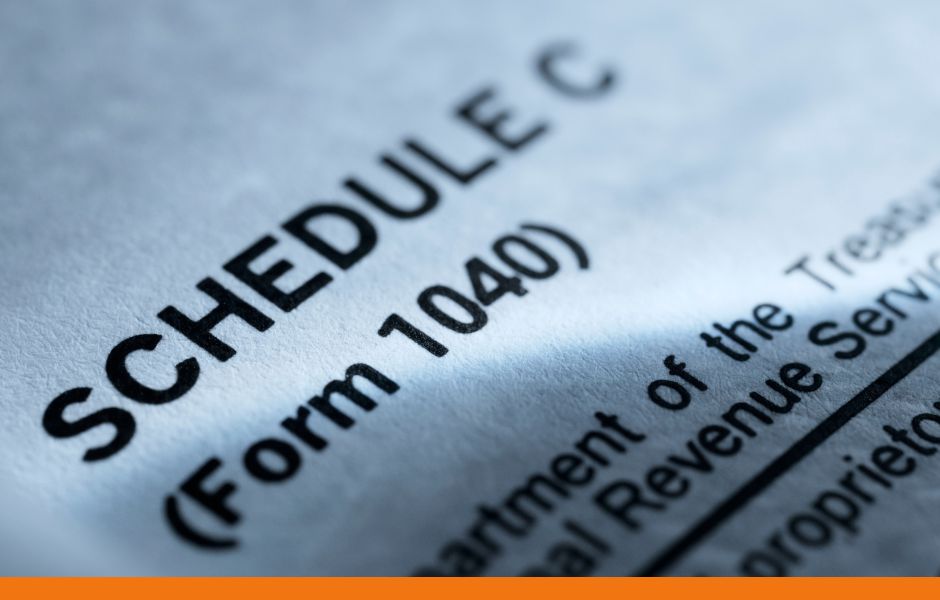
Image Source: Canva Pro
Schedule C (Form 1040) is an essential tax document used by sole proprietors and single-member limited liability companies (LLCs) in the United States to report income or loss from their business activities. This form allows self-employed individuals to detail their earnings, expenses, and ultimately, their net profit or loss for the tax year. Understanding how to fill out Schedule C accurately is crucial for tax compliance and to maximize potential deductions.
Key Features of Schedule C
- Purpose: Schedule C is specifically designed for reporting income and expenses related to a sole proprietorship or a single-member LLC. It provides the IRS with a clear picture of a taxpayer’s business operations.
- Part of the Individual Tax Return: Schedule C is filed alongside Form 1040, the individual income tax return. The net profit or loss calculated on Schedule C is transferred to the main tax return, impacting the taxpayer’s overall tax liability.
- Income Reporting: Schedule C requires taxpayers to report all gross receipts from their business. This includes sales revenue and any other income sources associated with the business operations.
- Deductible Expenses: Taxpayers can deduct various business expenses on Schedule C, including cost of goods sold, operating expenses, and certain depreciation. Accurately documenting these expenses can significantly reduce taxable income.
- Net Profit or Loss: The difference between total income and total expenses on Schedule C determines the net profit or loss from the business. This figure is crucial for tax calculations and future financial planning.
Understanding Schedule C is vital for any sole proprietor or self-employed individual. Properly reporting income and expenses can lead to significant tax benefits and ensure compliance with IRS regulations.
Frequently Asked Questions: Schedule C
What is the Schedule C?
Schedule C is a form used by sole proprietors and single-member LLCs to report income and expenses from their business activities as part of their individual tax return (Form 1040).
Who needs to file Schedule C?
If you are self-employed or operate a sole proprietorship, you are required to file Schedule C to report your business income and expenses. This applies to freelancers, independent contractors, and small business owners.
What type of income should be reported on Schedule C?
All gross income from business activities must be reported on Schedule C, including sales revenue, service income, and any other earnings related to your business.
What expenses can I deduct on Schedule C?
Common deductible expenses include rent, utilities, office supplies, business insurance, travel expenses, and advertising costs. It’s important to keep detailed records of these expenses for accurate reporting.
How do I determine my net profit or loss on Schedule C?
Net profit or loss is calculated by subtracting total expenses from total income. This figure is then reported on your Form 1040 and can impact your overall tax liability.
Do I need to attach Schedule C to my tax return?
Yes, Schedule C must be attached to your Form 1040 when you file your annual tax return. Ensure that both forms are completed accurately.
Can I e-file my tax return with Schedule C?
Yes, many tax preparation software programs allow you to e-file your tax return, including Schedule C. Just ensure that you follow the software’s prompts to complete the form correctly.
What if I have a loss on Schedule C?
If your business incurs a loss, you can report it on Schedule C. This loss may offset other income on your tax return, potentially reducing your overall tax liability.
- Glossary: 1099 FormThe 1099 Form is a series of tax forms used to report various types of income that are not covered under traditional employee wages (i.e., those reported on a W-2 form).
- Glossary: Earned Income
- Glossary: Independent Contractor
- Glossary: Mileage Deduction
- Glossary: Self-Employment Tax







